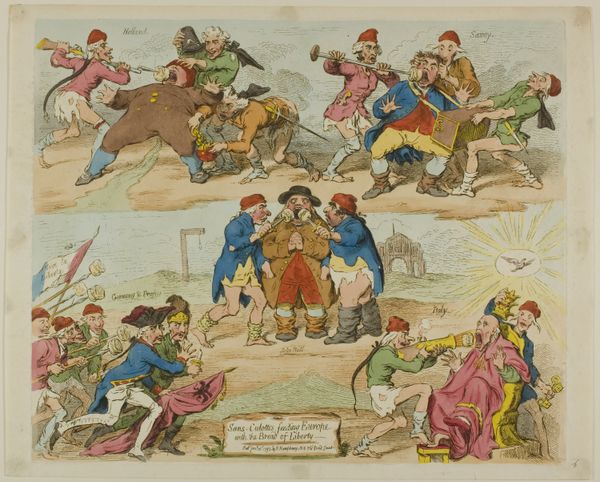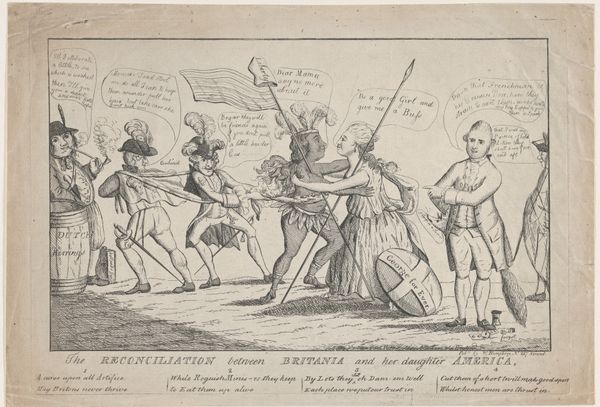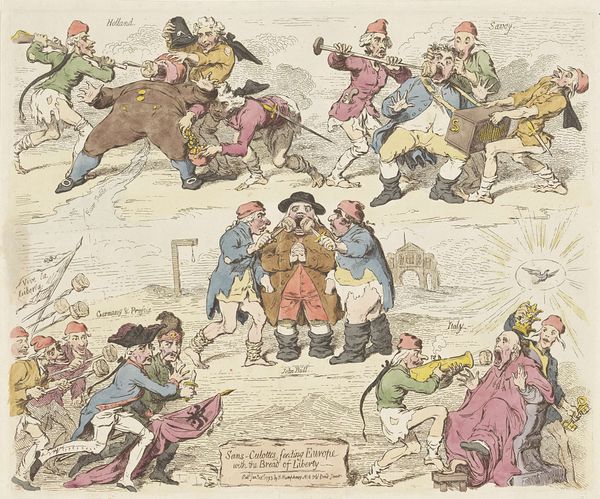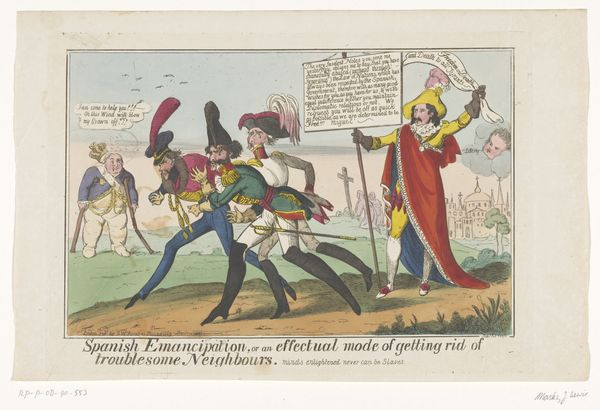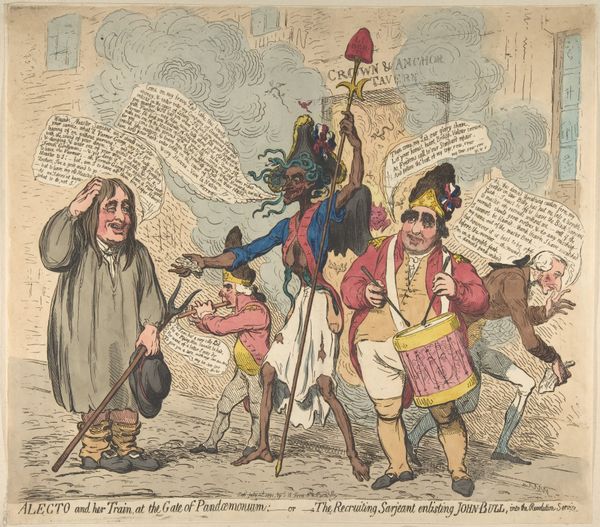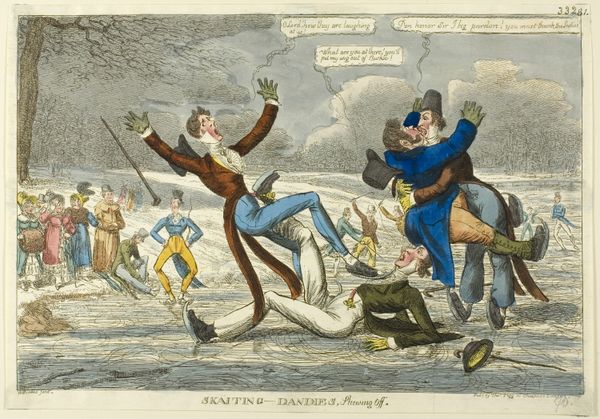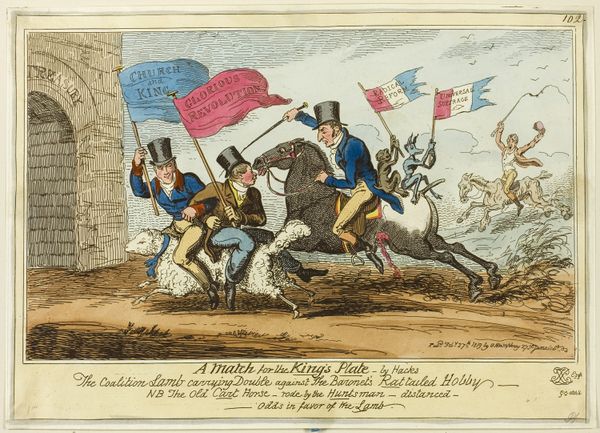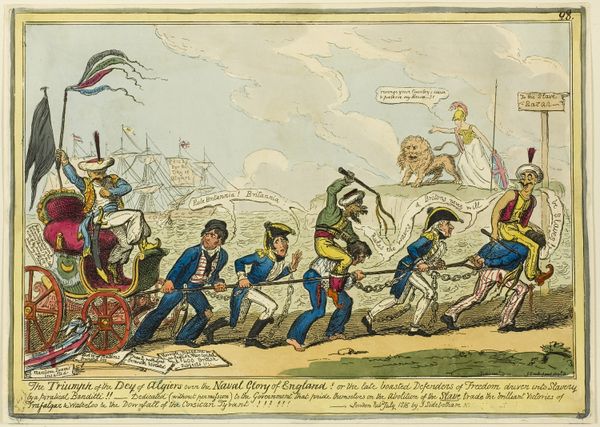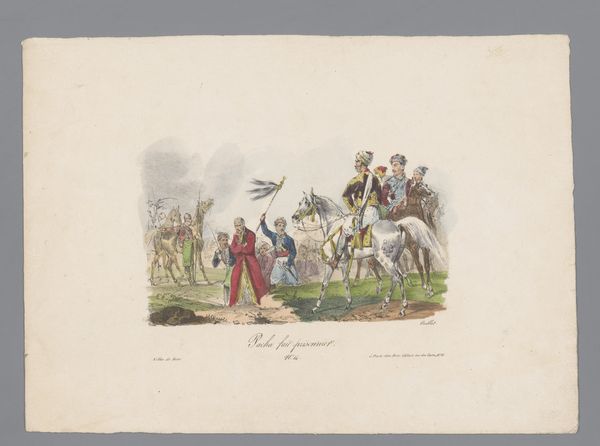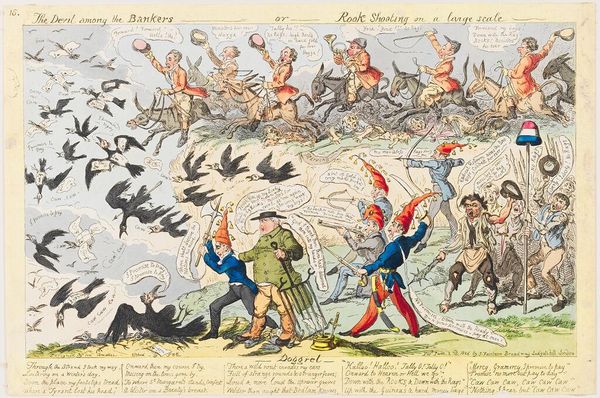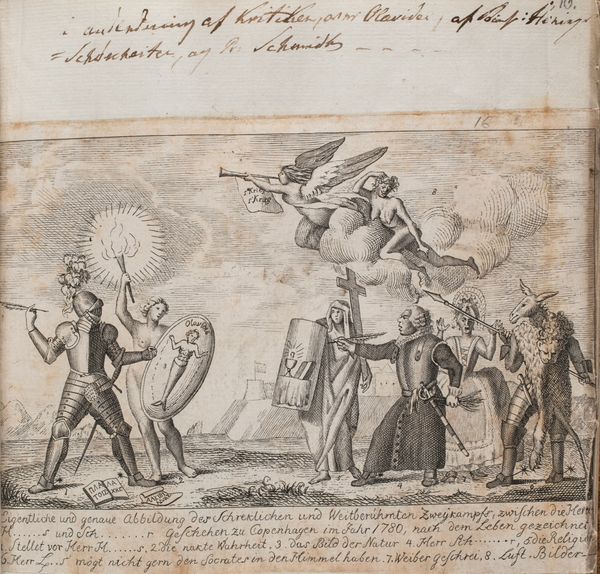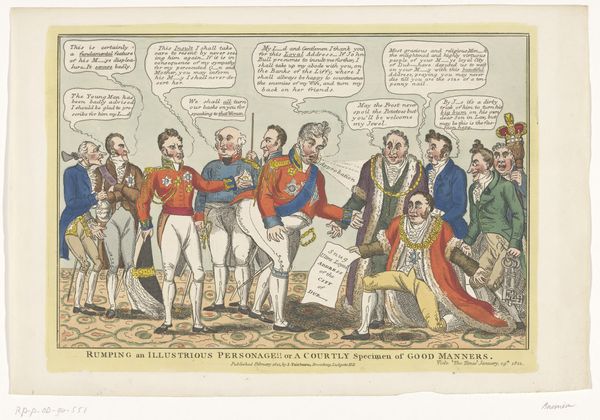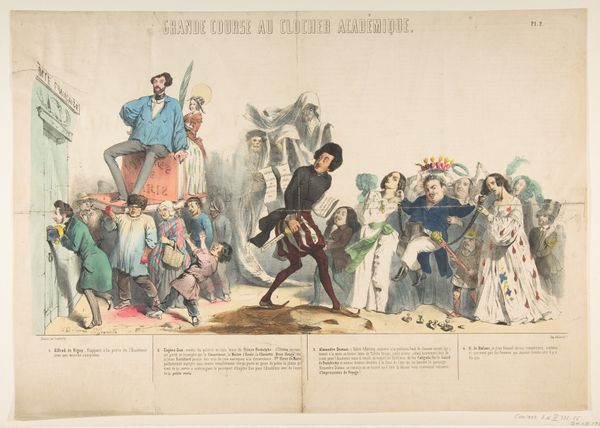
drawing, coloured-pencil, print, etching, watercolor
#
drawing
#
coloured-pencil
#
water colours
#
narrative-art
# print
#
etching
#
caricature
#
figuration
#
watercolor
#
coloured pencil
#
soldier
#
romanticism
#
history-painting
#
mixed media
Dimensions: Sheet: 9 1/8 × 13 3/8 in. (23.2 × 34 cm)
Copyright: Public Domain
Curator: Today we are looking at "A Review of the New Grand Army," a colored etching by William Heath, also known as Paul Pry, dating back to 1815. It resides here with us at The Metropolitan Museum of Art. Editor: What a wonderfully weird concoction! It’s all elbows and fury. The color palette is oddly muted for such an aggressive scene, but I love the slightly deranged energy of the piece. What’s actually happening here? Curator: Heath’s caricatures satirize the volatile political climate following Napoleon’s return from Elba. You see exaggerated figures, symbols of discontent, alluding to the social unrest sweeping Europe. Boundless Ambition and Grievances personified. Editor: So, it's not just about Napoleon specifically, but a broader statement on power, ambition, and dissatisfaction? That devilish figure at the top— is he a generalized embodiment of disruption? And there are those armies lined up on each side. Endless! Curator: Precisely. Those endless rows symbolize the sheer scale of conflict. And yes, the central figures are indeed allegorical. Notice the prominent skull: it speaks to the cost of war and the lingering specter of death. It’s not simply political criticism; there is cultural memory here of battles waged and lives lost. Editor: The symbolism feels almost medieval, clashing delightfully with the relatively modern military figures. And the sky, that cloudy haze in the center, reminds me of some ominous fever dream… This speaks to a lingering trauma—right? Like the landscape is mirroring something collective, internal. Curator: Undoubtedly. Heath utilizes symbols—the figures, the banners— to externalize that societal trauma and make it visually tangible. We can recognize historical parallels to other periods when cultures grapple with aftermath of unrest through these symbols as well. Editor: This almost makes current societal chaos and struggles understandable. A fever dream made of etching! It reminds me we might be living in someone’s political cartoon *right now*. What a deliciously unnerving thought to end with. Curator: Indeed. The cyclical nature of societal unease is certainly something that resonates powerfully still. A complex reflection in a seemingly simple caricature.
Comments
No comments
Be the first to comment and join the conversation on the ultimate creative platform.
